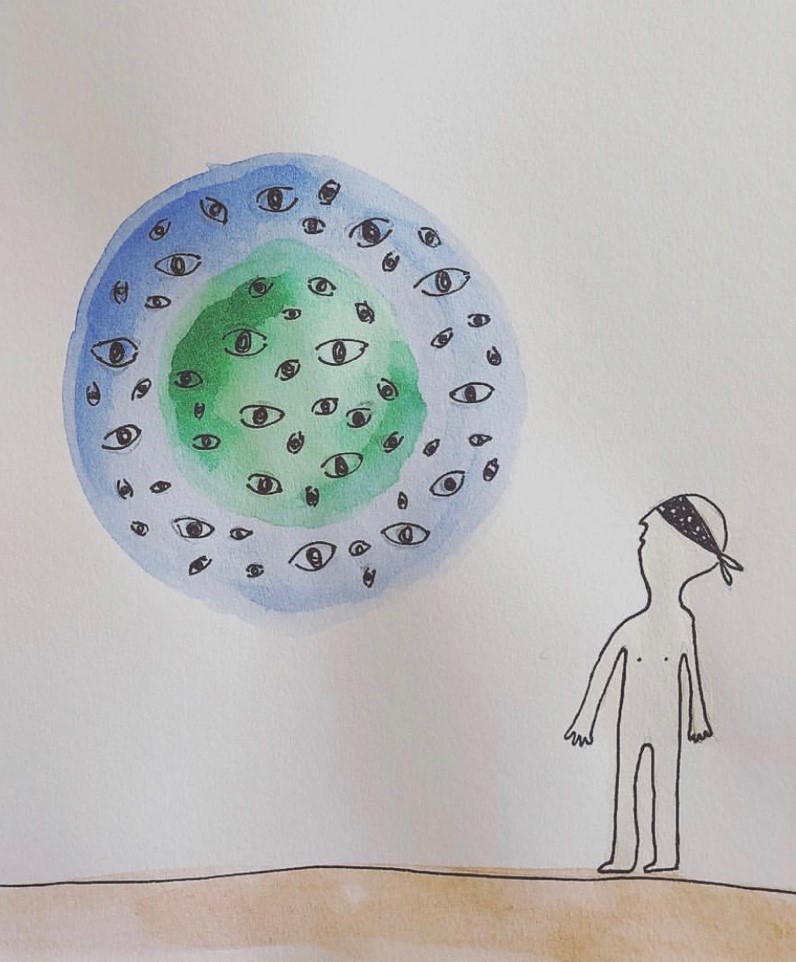
Talking About Shame Shamelessly

Mariam El Halawani, MAATIC Psychological & Counselling Center
In a short online based survey ATIC asked “how do you define shaming?” Immediately, clear patterns began to surface; (a) sources of shame can be both internal and external, (b) shame assumes a “norm” from which any deviation would be shameful, and (c) shame can target values, appearance and behavior. Interestingly, after submitting their answers, most people consented for the answers to be shared publicly as long as they remained anonymous. Through this, people were enacting the essence of shame. They were ultimately ashamed of linking their answers to their identities.
Shame can be one of the most crippling human emotions. It can generate strong feelings of fear and doubt which in turn, can affect our actions. In experiences of shame, it seems as though we lose our power to an internal voice that makes us question our worthiness. Researcher Brené Brown suggested that “shame is highly correlated with addiction, depression, violence, aggression, bullying, suicide and eating disorders.” The reason being, is that shame is not still, rather, it is something that can continue to grow within the individual, and according to Brené Brown shame requires three components to grow: secrecy, silence and judgment. It then becomes easy to see why openly talking about shame is the perfect antidote.
Let’s begin by understanding the psychology of shame.
Where does shame begin?
Research suggests that shame is rooted in our early experiences of powerlessness (as infants) that are dependent on others for survival. From a very young age, humans are able to sense threats that could disrupt such attachments. We are all born with brains that are wired to experience shame, in fact, researcher Thomas Scheff describes shame as “the master emotion” to capture its powerful role (both adaptive and maladaptive) in our social and emotional functioning. It is important to understand how shame, on one hand, can be a motivator for positive and appropriate social behavior, and on the other hand, can be the root of maladaptive functioning. In the developmental period of ages 1-3, we begin to navigate our sense of independence. Psychosocial developmental models explain to us that in this age, it is crucial to overcome the psychological crisis that is autonomy vs. shame. The inability to acquire a healthy sense of autonomy can result in feelings of inadequacy and low self esteem. Now although shame may be rooted in our childhood experiences, shame continues to accrue throughout development. Therefore, it is essential to reflect on and improve on interactive techniques being used at home, school and later on at the workplace.
Breaking down shame.
In studies on shame and resilience, shame was defined as “an intensely painful feeling or experience of believing we are flawed and therefore unworthy of acceptance and belonging” (Brown, 2005). Shame was also described as a “psycho-social-cultural construct”. This stemmed from the fact that shame is a complex emotion, experienced on multiple levels. On a psychological level, the person is consumed by the self’s destructive thoughts and behaviors. The social level relates shame to threat of losing connection with others, and the cultural level identifies shame through deviating from rigid cultural norms and expectations.
Shame vs. guilt: what’s the difference?
Many times we confuse shame with guilt, and vice versa. Although these two emotions may look similar in some ways, they are distinct, and so their impact on the human psyche can also be very different. Guilt is behavior focused, while shame is self focused. For example, to say that “I did something wrong” varies greatly from “ I am a bad person”; “ I lost my temper” vs. “I am a violent person.” Another distinction between shame and guilt is that shame is more often paired with the evaluation of others, whereas guilt is usually a more private process. It is important to understand those differences as each of the emotional experiences can invite different consequent thought and behavioral patterns.
Our role towards ourselves and others.
Shame has been the focus of many recent psychological studies. For reasons stated above, shame needs to be first recognized and then, addressed. We can all begin on a personal level; introspection is a great place to start. When we identify our own triggers of shame and consciously reflect on our own internal critical voice we are gaining more control over the impact of shaming. We are also more likely to trace our defense mechanisms and work on towards acquiring more adaptive and constructive ones.
We also have a responsibility towards others. We all have embedded biases and opinions (and we are entitled to having them). However, next time you catch yourself passing judgment onto others, or perhaps unintentionally reacting in a way that may induce shame in someone else, take a step back and remind yourself of how this can impact someone else’s emotional wellbeing. If you are a parent, a teacher, a mental health professional or simply someone’s colleague, try to avoid shaming as an approach to encourage results. Rather, use mindful and non-threatening communication to deliver your message.
Here are some tips to do so:
- Focus on the behavior rather than the person
- Try to understand the emotional need that may have caused the behavior
- Don’t resort to comparison
- Avoid labels
- Choose openness instead of secrecy
Remember, “If we can share our story with someone who responds with empathy and understanding, shame can’t survive.” – Brené Brown,
Helpful resources:
https://www.ted.com/talks/brene_brown_listening_to_shame?language=en
https://www.psychologytoday.com/us/blog/your-zesty-self/200905/what-we-get-wrong-about-shame
https://psychology.iresearchnet.com/social-psychology/emotions/shame/
https://pdfs.semanticscholar.org/818f/8d345731bec204c1d1b861cd3c469944354d.pdf




